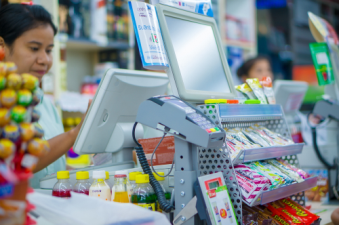Q&A with Frank Bishop of Innovative Fixture Solutions 11/18/2015
Frank Bishop, the president of Innovative Fixture Solutions will participate in a panel discussion being held at ECRM’s Fixture Review - Checklane and P.O.P. Merchandising event. The panel will focus on the latest trends in fixture and display rack design and other equipment. The Panelists are comprised of the industry’s leading minds, including the following people:
- Sarah Glisman, National Impulse Racking Director, Wm. Wrigley Company
- Bill Romollino, Vice President Customer Development, Time Warner Retail Sales & Marketing
- Frank Bishop, President, Innovative Fixture Solutions
- Tim Barnes, National Account Sales Director, True Foodservice
- Cam Cloeter, President, Impulse Marketing
The following is a Q&A from Frank Bishop which touches on some of the hot topics in P.O.P Merchandising.
Please describe Innovative Fixture Solutions (IFS).
IFS is the U.S. industry leader for front-end manufacturing and works with several large grocery, drug, and convenience retailers across the country to develop innovative checkout solutions.
How can or should retailers merchandise self-checkout lanes and what are some of the major mistakes retailers make?
Self-checkout is vastly different from one retailer to the next and even from one self-checkout lane to the next. More often than not, the self-checkout area requires the most fixture customization when compared to any other section of the store.
Often, retailers place the front-end checkout racks after the bagging area due to space constraints, but this is one of the biggest mistakes a retailer can make. When product is merchandised after the point of sale, the consumer does not have visibility to these items while waiting in line and therefore doesn’t have ample opportunity to make the impulse buy. Furthermore, by the time the customer sees the product, they have already paid and are heading out the door which means that they are less likely to jump back in line to make another purchase.
The most important thing a retailer can do is get to the customer with a well-merchandised fixture, before the point-of-sale.
In an industry that is driven by consumer purchasing behavior, what are ways that retailers and suppliers can keep up with these ever-changing trends in an effort to effectively merchandise the front end?
Building modularity into fixtures is one way to keep up with the ever-changing consumer trends. This is because retailers are not forced to swap out the entire fixture, instead, individual clusters or groups within the fixture as a whole can be merchandised differently to stay aligned with the latest trends. Utilizing promotional endcaps to have instant flexibility for new and emerging categories is also critical. Lastly, it is extremely important for retailers to look at front-end as an individual department and provide resources that support it internally.
What role does technology play at point of purchase and how do you expect these trends to evolve in the future?
We have seen significant sales growth within LED lighting concepts over the past two years and that growth has been a major positive for the business. The future is very interesting, as belt and checkout systems get faster and the queue time shortens, IFS predicts that those products that require a longer browse time before purchase will struggle, and new items will emerge that work better within the check-lane format. Eye tracking studies will play an important role in the way that retailers merchandise and build technology into the front end.
What advice do you have to optimize the front-end?
Take the time to review your sales against the national trend in each category. The opportunity gaps should help you identify where you are over or under spaced. From there, merchandise the power categories first, build in modularity for future change, and make sure the fixture design communicates your store image as that is the consumer’s last impression.

